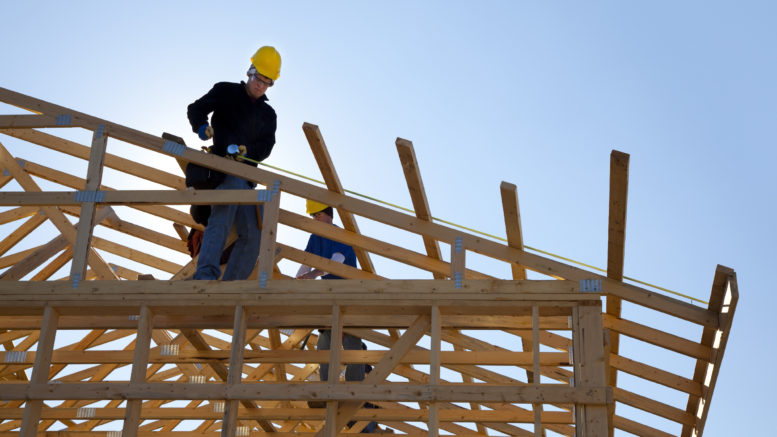ConDig (17-Oct-18). Construction of new homes in the US dropped 5.3% in September amid a drop in multifamily production and a fall in the South following the possible impact of Hurricane Florence.
The decline took starts to a seasonally adjusted annual rate of 1.2 million units for last month compared with 1.28 million the month prior, according to latest figures from the Commerce Department.
Single-family starts edged down 0.9% to 871,000 units, multifamily starts—which includes apartment buildings and condos—crashed 15.2% to 330,000.
Combined single-family and multifamily housing starts increased 29% in the Northeast and 6.6% in the West. Starts fell 13.7% in the South and 14% in the Midwest.
The fall in the South of the country followed Hurricane Florence, which made landfall in North Carolina in the middle of the month and caused damage and flooding throughout the Carolinas.
Analysts also believe that Hurricane Michael, which struck Florida and other southeastern states last week, will probably impact housing starts in October.
Housing permits, which are a sign of future construction activity, fell 0.6% drop in September, also due to multifamily softening. Multifamily permits decreased 7.6% to a 390,000 unit pace while single-family permits rose 2.9% to an annualized rate of 851,000.
“This report is consistent with our forecast for gradual strengthening in the single-family sector of the housing market following the summer soft patch,” said National Association of Home Builders (NAHB) chief economist Robert Dietz.
“A growing economy coupled with positive demographics for housing should keep the market moving forward at a modest pace in the months ahead.”
Despite the bearish figures for September, builder confidence in the market for newly-built single-family homes increased one point to 68 in October on the NAHB/Wells Fargo Housing Market Index (HMI). Builder confidence levels have held in the high 60s since June.
Leaders of the homebuilding industry continue to warn about the rise in material costs, which has been exacerbated follow a decision by President Trump to slap a 25% tariff on imported steel and a 10% duty on foreign aluminum from Canada, Mexico and the European Union on May 31.
The NAHB has also raised concerns over President Trump’s decision to impose tariffs on an additional $200 billion worth of Chinese imports.
